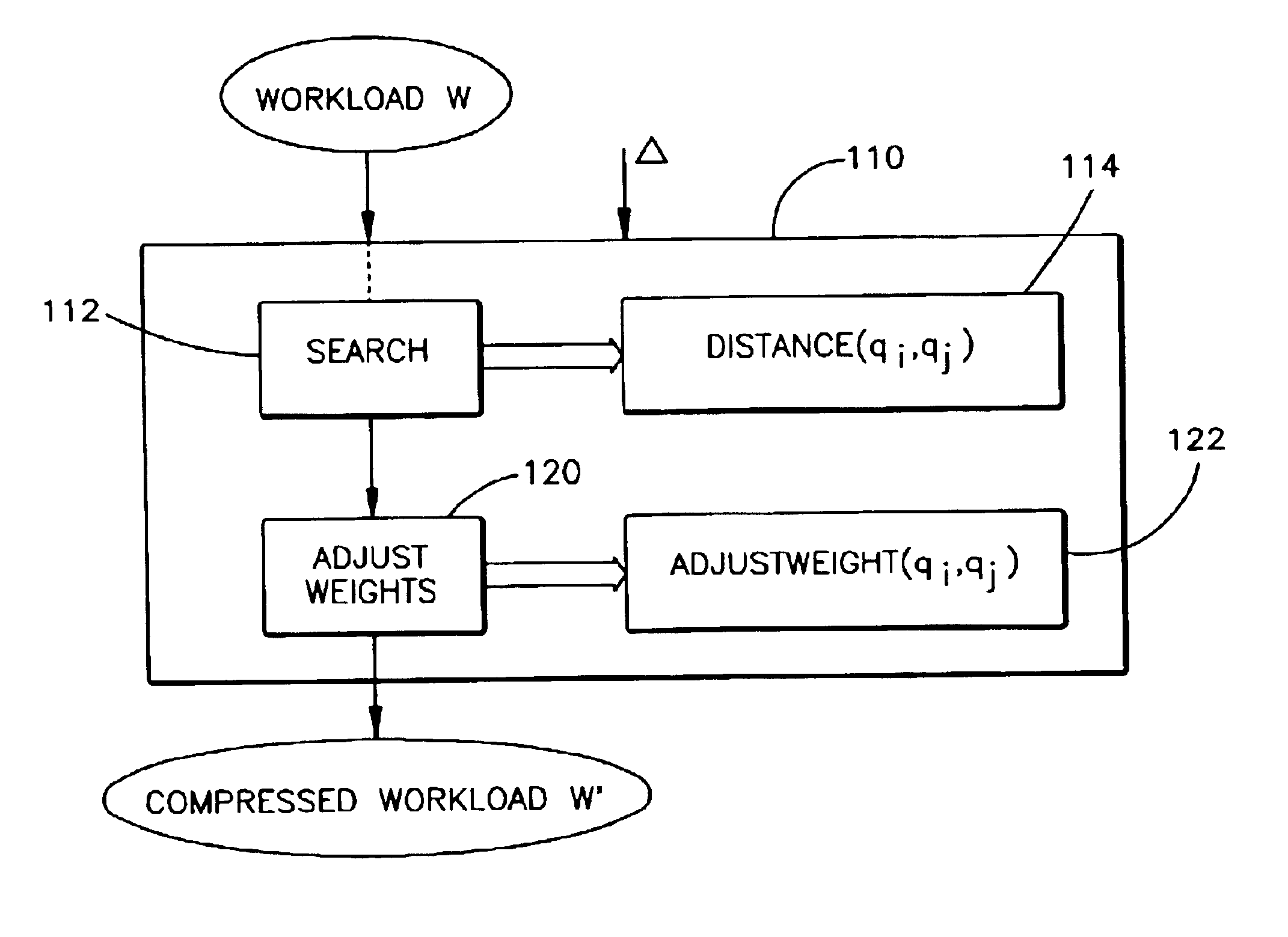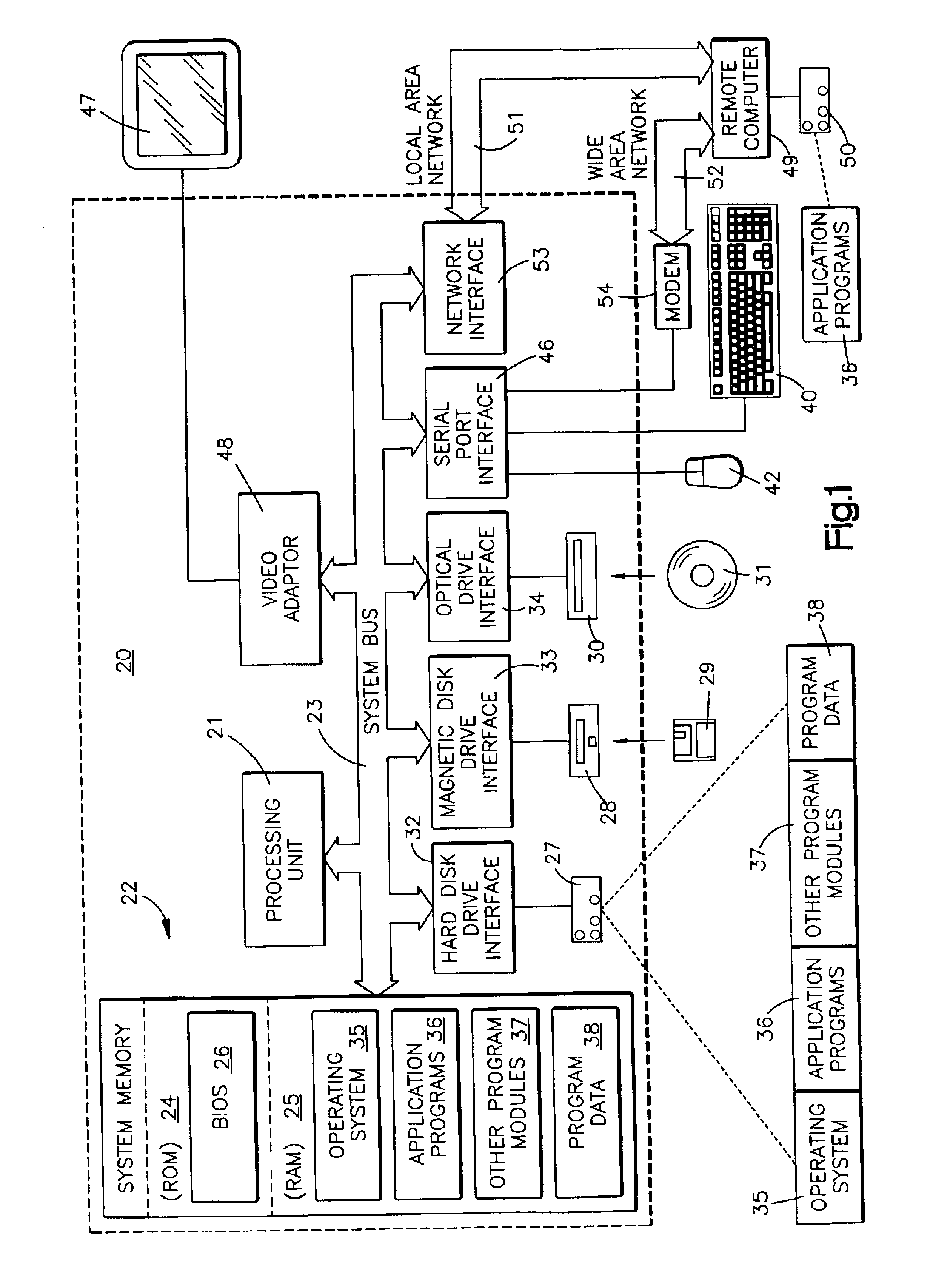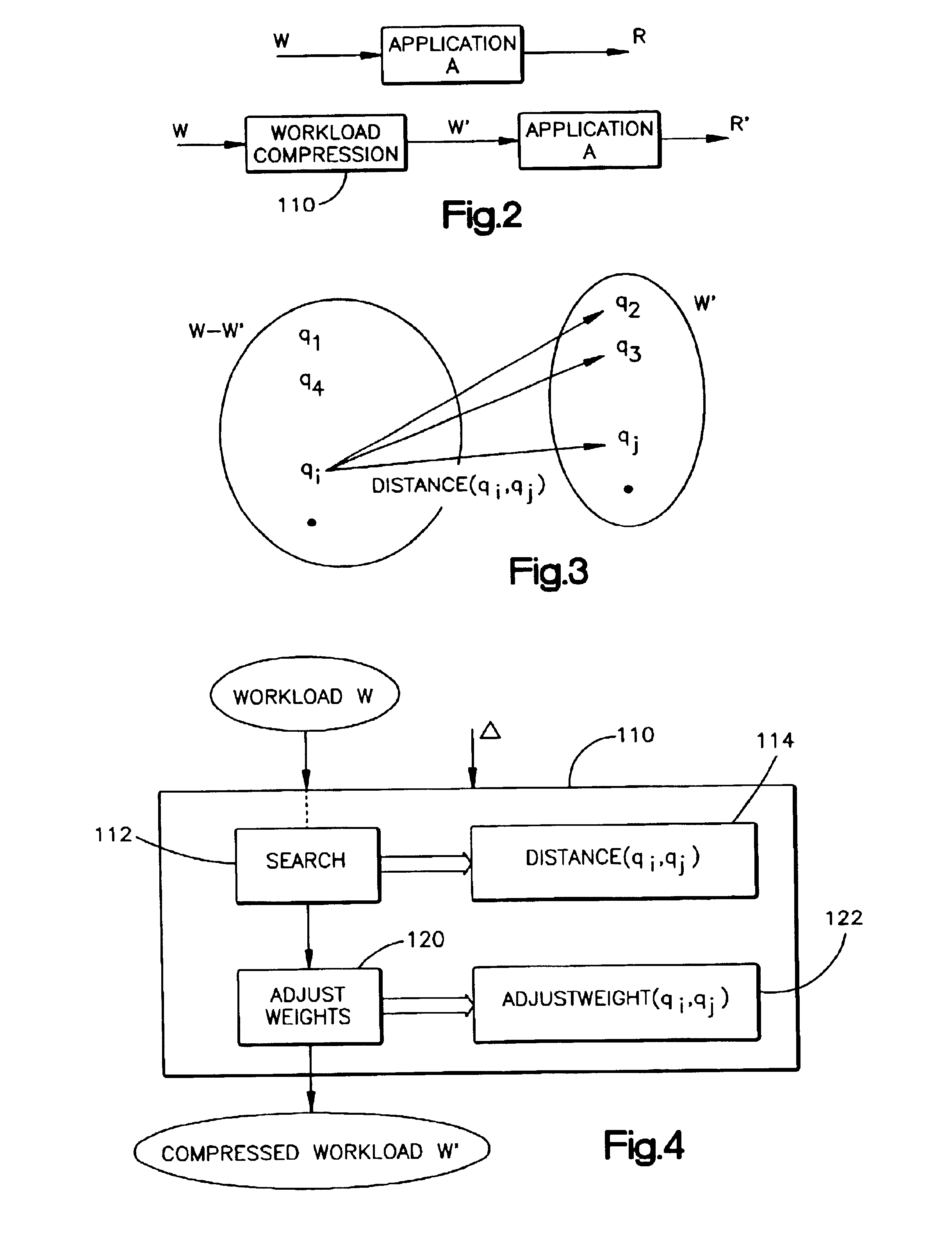Compressing database workloads
a database and workload technology, applied in the field of compression of database workloads, can solve the problems of large workloads, significant impact on running time, and ineffective compression of workloads
- Summary
- Abstract
- Description
- Claims
- Application Information
AI Technical Summary
Benefits of technology
Problems solved by technology
Method used
Image
Examples
example 1
Workload Compression for Index Selection
[0022]Selecting the right set of indexes is important for the performance of a database system. Automatically selecting appropriate indexes for a database is an important task since it reduces the burden on database administrators, and hence the total cost of managing the database. Recently, several major commercial database systems have developed tools to automate the task of choosing indexes. An index selection tool takes as input a workload W and a database, and produces as an output R a set of indexes appropriate for the given workload. To evaluate the quality of the result R, these tools typically use as FA (W,R) (where A=index selection), the query optimizer estimated execution time of statements in W if the result R is implemented (i.e., if the set of indexes R is materialized in the database). Thus, e.g., specifying δ=0.05 for index selection implies that if one is compressing the workload an acceptable compressed workload W′ provides ...
example 2
Workload Compression for Approximate Answering of Aggregation Queries
[0023]The goal of approximate query processing (AQP) is to allow efficient but approximate answers to ad-hoc queries against large relational databases. Random sampling is an approach for approximately answering aggregation queries (e.g., queries computing SUM or COUNT aggregate expressions). In this approach, the query is executed on a sample of the data rather of the entire data, thereby returning approximate answers but speeding up the query significantly. Recently, several printed publications have recognized the importance of using workload information to pick samples of the data and thereby improve upon the straightforward approach of uniform random sampling. Thus, the workload W is analyzed in a preprocessing step and this information is used to produce as result R, an appropriate set of samples of one or more tables in the database. These samples are chosen with the objective of minimizing the average relat...
example 4
Motivating Example for Selectivity Based Partitioning
Consider the following two queries:
[0056]Q1: SELECT * from persons where age>80[0057]Q2: SELECT * from persons where age>1
[0058]As example 4 shows, the straightforward partitioning scheme outlined above may still include queries into the same partition that are still “far apart”. According to the above scheme, both Q1 and Q2 will be assigned to the same partition because they both have the same signature. However, note that the queries are still far apart from the point of view of indexes that are appropriate for each query. Due to the respective selectivities of the predicates on age, for Q1, an index on column age is likely to be very useful, whereas for Q2 an index on column age is likely to be of no use. Motivated by this observation, the process further splits each partition on the basis of selectivity information. For a single-table query, it computes the joint selectivity of all the predicates. All queries with joint select...
PUM
 Login to View More
Login to View More Abstract
Description
Claims
Application Information
 Login to View More
Login to View More - R&D
- Intellectual Property
- Life Sciences
- Materials
- Tech Scout
- Unparalleled Data Quality
- Higher Quality Content
- 60% Fewer Hallucinations
Browse by: Latest US Patents, China's latest patents, Technical Efficacy Thesaurus, Application Domain, Technology Topic, Popular Technical Reports.
© 2025 PatSnap. All rights reserved.Legal|Privacy policy|Modern Slavery Act Transparency Statement|Sitemap|About US| Contact US: help@patsnap.com



